As you know, we sell Garmin products. To find out what we are actually offering our customers, I requested one model for testing. After all, this is unfamiliar and new territory for me.
Even though I wanted the classic Fénix, I actually got the best I could: the MARQ Captain American Magic model. This is because we have the MARQ collection in our store in Aupark, and it represents the highest range that Garmin offers. Incidentally, you won't find this collection in any regular watch store or electronics store, only at WDL. That's just a fact. Let me start by saying that classic mechanical watches will always come first for me and that I don't consider Garmin to be a watch or an accessory, but only a sports computer. Design is somehow irrelevant to me in this case. I'm not even a big gadget man – just take it as the opinion of someone who has had almost no experience with watches of this kind.
You definitely shouldn't buy this watch if you don't really do any sports activities. If you go running, swimming, or cycling at least once a week, Garmin makes sense for you. I deliberately mentioned biking because that's the activity I do most often. I don't know what the definition of a hobby cyclist is, but I try to spend every possible moment on two wheels. Even the thought of spending a weekend in the mountains with my friends, biking from morning till night, gives me goosebumps with excitement.
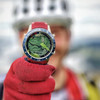
Garmin Marq Captain American Magic
This model from Garmin's top-of-the-line collection is designed primarily for sailors, yachtsmen, and seafarers, with features specifically tailored for these activities: e.g. regatta countdown or man overboard – at the push of a button, it immediately records their exact position and more. The watch is made of titanium, has a ceramic bezel and sapphire crystal. The comfortable silicone strap is very pleasant to the touch, and a second red one is included in the package. The case has a diameter of 46 mm and is water-resistant to 100 meters. The American Magic edition pays tribute to the largest racing club.
I admit that I had the watch for about a month and during the first three weeks I was able to check its basic functions, but I still missed the real deal, a proper field test. Until this weekend, when my friends and I went running in Donovaly. We had originally planned a 55 km circuit with an elevation gain of 1,800 meters, but the unfavorable weather changed that to a shorter version. We started from Donovaly via Korytnica around Kozie chrbát via Kečka and back to Donovaly. The whole circuit took us 4 hours and was about 25 km long with a total elevation gain of 750 meters. From this trip and the entire duration of "testing" the watch, I have gained some insights that I would like to share with you. I don't sail or play golf, so I won't be discussing those functions.
At first, the watch was not very intuitive to me. It's true that I was able to find the basic information myself, but I had to find out other things either through YouTube or by bombarding the Garmin representative with questions :-). I have to admit that the complexity of this device is so extensive that it probably couldn't be any other way.
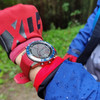
Processing
Since I am pragmatic when it comes to sports watches, I don't worry about whether they go well with a shirt or a T-shirt, which is common with brands such as Longines, Tissot, Omega, Invicta, and others, the many positive reactions from my friends have convinced me that they really like the look of these watches. The fact that none of them wear classic watches doesn't necessarily mean anything, as they are a small sample of the population :-). nbsp;I had an interesting reaction when a friend who has been wearing a Garmin for years, and whom I regularly teased about it over a beer, immediately wanted to borrow my American Magic when he saw it on my wrist. So it definitely has its fans and die-hard Garmin supporters.& nbsp; The high-quality and robust titanium body and the very comfortable silicone strap, which took about 15 seconds to replace with the second red one in the package, definitely deserve to be highlighted. But that's where my enthusiasm for the design ends.
I have one minor complaint: the recessed sapphire glass does not fit perfectly to the edge. There is a tiny, almost imperceptible gap, which I only noticed after a small piece of mud got stuck there. However, I believe that a soft brush and water will solve the problem.
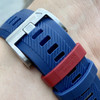
Watch controls
The watch is controlled using five hardware buttons, three on one side and two on the other. It's quite intuitive, and after a while I got used to it and knew where everything was and how it worked. Many people thought the display was touch-sensitive, and their first reaction was to swipe their thumb across the glass, which was quite amusing to watch. After I told them that the watch was controlled only by buttons, they were slightly surprised.
From my point of view, this is the only logical option. I usually ride my bike wearing gloves, so I can't quite imagine how long I would enjoy taking my gloves off every time I stopped, for example, to switch screens. Furthermore, it is assumed that you sweat during activity, and sweaty fingers would not respond very well to the screen either. Add to that a day of rain, and the touchscreen would be completely unusable. However, the watch worked really well through my gloves, without hesitation, responding immediately and with a pleasant feel. It may not seem like it, but on our route I was constantly switching between multiple screens: from continuously monitoring the route profile to the navigation screen and so on. So I would immediately throw away the option of controlling the watch by touch. Only if it were hybrid controllability, but I think it's more a feature of the display.
will solve the problem.
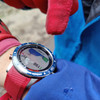
Display readability
The watch is equipped with a MIP (sunlight-visible, transflective memory-in-pixel) display with a resolution of 240 x 240 pixels and a size of 30.4 mm. Based on the description, it should be clear that the watch is easy to read in sunlight, which is not entirely true. The watch is fantastically readable, and I emphasize the word fantastically twice! In practice, it seemed that the more sunlight hit the display, the better it was. Similarly, during rain and under cloudy skies, it was downright excellent – there is simply no room for complaint here. The display is not backlit, so in the dark you have to manually press a button to illuminate it, which only takes a few seconds, and then the display turns off. This is certainly to save battery power, but I imagine there must be a setting somewhere to adjust the length of time the display stays lit. If you could let me know where, I'd be grateful.
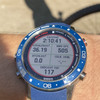
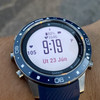
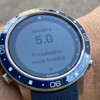
The display itself is very simple and, compared to TH Connected, for example, it has very large dots and smoothness is the last thing you could say about it. When you have a map set up and need to read contour lines or other data, it's not the most intuitive thing in the world. However, the entire interface is adapted to this, and the display shows only what is really necessary—nothing more. Sure, I could imagine a finer display, but that's not a criticism, because I believe it's the best balance between readability, visibility, and battery life.
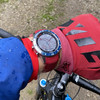
Battery life
I think that readability and battery life are the two most important factors that make Garmin the absolute leader on the market. Garmin does not specify battery life in %, because this information is not relevant. It states the battery life in days and hours, which I find much more practical. This is because battery life is affected by factors such as whether you have GPS turned off or on, and I assume you have all 3 GPS systems (Glonass, Galileo, and GPS) activated.
The manufacturer specifies a battery life of 12 days in smartwatch mode – that is, notifications and standard basic use of the watch – and up to 28 hours in GPS tracking mode. Then there is Ultra Trac mode: it simplifies GPS functionality to track your location every minute, and battery life in this mode increases to up to 48 hours. This mode also eliminates notifications and the optical heart rate sensor. In practice, this means that I charged the watch about once a week, had all notifications and heart rate measurement activated, and performed three activities with an average duration of one hour with GPS turned on during the week. Before the weekend, when I was leaving for the mountains, the watch showed a battery life of 3 days. On Saturday, I went on a 4-hour trip, during which I had GPS navigation turned on continuously. In the evening after the trip, I still had an 18-hour reserve. Based on this, I concluded that I can really rely on this watch.
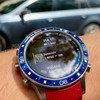
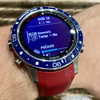
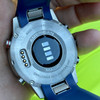
Garmin Connect app
Garmin provides its own mobile app, which you can download and log in to, then pair with your device. It's simple and intuitive. Using this app, you can easily update your watch either remotely or using a cable via Garmin Express. Before setting off, we created GPS coordinates on mapy.cz so that we knew exactly where we were going. I simply transferred the GPX file from the PC version to Garmin Connect and then to the watch. The data was displayed immediately on the watch. I could immediately see the route profile, the number of climbs ahead of us, and the circuit itself. I struggled a little at the beginning, but I quickly got into it and realized that it was relatively easy for me too.
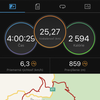
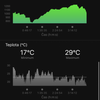
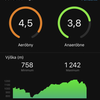
Furthermore, you will find a lot of interesting data in the Garmin Connect app. In addition to "trivia" such as my heart rate during the day and how much stress I experienced, I really enjoyed reviewing the information after my ride. Garmin processes a lot of information and compares it with its own database created in collaboration with many athletes, providing you with very personalized information about how you performed. You can choose from several options for displaying the information. I most often used the last one, where the data was very clear to me based on graphs and images.
In addition, the app evaluates your efforts and translates them into understandable language. For example, the effect of training: the effect of training is measured on a scale from 0 to 5 and tells you how a particular activity has affected your overall training. What score did you achieve in the aerobic zone, for example, and what impact could this have on your training? I was also very interested in the time spent in heart rate zones: Based on this, I was able to determine how my fitness was progressing and how long I spent in each zone. I also monitored this on my watch. Since I also use cycling as a means of losing weight and getting in shape, I really liked it. There is certainly a lot that could be written about this, but I'll leave that to the experts.
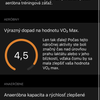
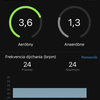
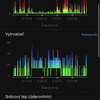
Practical experience from the trip
It rained all day on Saturday, and we hesitated about whether to go at all, but in the end we decided we weren't cowards and set off. We had planned the route starting right from our cottage. I left the cottage, selected "navigate" in the menu, chose our route, and started navigating. Almost immediately, a green icon informed me that the GPS was ready. I admit that it took me a whole hour to get my bearings and understand how Garmin actually works with navigation.
For the first hour, we checked everything with our cell phones, somehow not trusting the watches, but then no one had to take out their cell phones anymore, and questions flew: Demo (nickname), how many more climbs? And now? When will we be there? And so on. I really enjoyed watching the profile, because I was able to prepare myself well for the climb. I could assess whether I could push myself on this hill and give it my all, because I would have enough time to recover after it, or not.
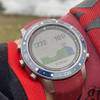
It showed me a map (I would have appreciated faster map controls and responses), which I couldn't really figure out at that moment. But then I realized that the map shows the main roads and paths and leaves out a lot of irrelevant details. It even shows the distance at the bottom, at which point I will have to either change direction quickly or turn off. After an hour, however, it was great! All I had to do was stray a few meters from the route, and my watch vibrated to alert me that I was off course. I also used the track profile: it was really great to see how many meters we had climbed and how many meters we had covered (marked in green), while blue marked what was ahead of us.
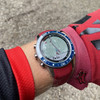
I must admit that it was incredibly fulfilling not only for me, but also for my friends. I could also track my estimated time of arrival (ETA), calories burned, heart rate zone, and current speed. I'll pause for a moment on the current speed: Garmin measures it based on GPS, which has a slight delay, so I definitely recommend purchasing a wheel hub sensor. I would also buy a watch holder for "rides." After all, it's more comfortable when you clip it on and don't have to wear the navigation device on your wrist. In that case, a chest strap for heart rate monitoring is also necessary and, after all, more accurate.

I thoroughly enjoyed the trip, but I had to burn all my gear—except for the bike—afterwards. The views, which were absolutely magical thanks to the weather, filled me with wonder. The gentle, steady rain meant that even the most innocent-looking trail was sometimes a struggle for survival, and the clouds and mist rising from the valley below Kečka will resonate in my memories for a long time to come. If I had to choose the weather again, I would choose exactly the same: cloudy with a gentle rain.


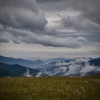
Strava
Before I forget, I used Garmin as a trainer when riding after work. I connected my watch to Strava. It was great to see my progress and info about how I was doing compared to my best time on our training segment or my friends' times in the group, and I could see it right away. I could write a lot more about Strava and Garmin, but I didn't want to go into too much detail. I think I've mentioned everything that's important to me.
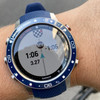
Price
Once, a customer asked me how much the black watch (Tissot PRS 516 in black PVD) cost, and I replied that it was €560. He then told me to get lost, to get a grip, and to stop making a fool of myself. Another customer asked me to show him some gold watches for his father's birthday. So I pulled out a Longines Saint Immier – 18-carat case and black leather strap, priced at €3,500. When I told him the price, he "threw" the watch on the counter and told me to show him something decent. If I remember correctly, he bought an Omega DeVille Prestige with a central second hand for €7,000.
What is the result?
If you just want to show off in front of your colleagues at the office (yes, I've heard that you can show off with a Garmin watch), then forget about it and buy a Connected or Apple watch. But if you take your activities more seriously, then this watch is worth mentioning. And I've only mentioned the tip of the iceberg of what it can do. If I had one, this would be the basis for what I would use it for. So, I'll say it again, watches that caress the soul should have a heart in the form of an oscillator, for everything else, I want Garmin. Confirmation that what applies to classic watches also applies to these watches is that until you try them, you don't know what they're all about. you don't know what it's all about, was when my two friends, who knew what Garmin watches could do, saw them with their own eyes during our trip and both ordered "Phoenixes" from me :-)
One more small footnote: I really liked receiving notifications on the watch display – Instagram, email, Facebook, and others. You can't reply to them from an iPhone, but apparently if you have an Android, you can set up predefined short messages. I was also disappointed that I couldn't use Garmin Pay™ – but that's more of a problem with my bank, VUB (the entire Intesa Sanpaolo group, as well as Raiffeisen Bank).
Introduction
My name is Martin Demko, and I have been working with watches since 2011. During that time, I have handled many models: cheap, expensive, renowned brands, and lesser-known ones. My work is both a pleasure and a hobby for me. What I have always strived for and continue to strive for is maximum honesty towards customers, even at the expense of business. I have completed numerous training courses and a relatively large number of training sessions in Switzerland. If you like my articles and my subjective view on individual topics, or if you disagree, feel free to write to me at m.demko@racio.com. I would really appreciate any feedback.



